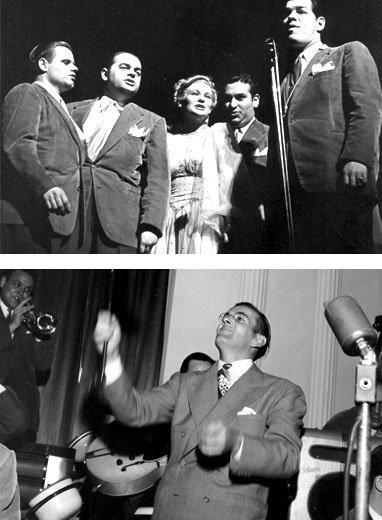Itâs been more than 80 years: Glenn Miller founded his big band, which came to epitomise swing. Its distinctive sound â characterised by the particular instrumentation and the sophisticated arrangements â was key to the orchestraâs success. The orchestraâs head places great importance on both.
THE ARRANGER MAKES THE DIFFERENCE
The typical âGlenn-Miller-soundâ is created by different groups of instruments, playing together in the big band: at the core four saxophones and a leading clarinet, trombones and trumpets, bass and percussion, and last but not least the piano. With regards to arrangements Glenn Miller was particularly gifted: he was a perfectionist, who interpreted and arranged his own and compositions by other musicians, so they corresponded exactly with his ideas of the sound, and with that of the orchestra. The Glenn Miller Orchestra conducted by Wil Salden works with these arrangements still today and performs them in their original version at their concerts. What is surprising about this: the typical Glenn-Miller-sound is fresh as it was the first day.
SWING & BIG BAND: CREATIVITY PLUS PERFECTION
Swing, as we know it today, is inseparable from the great big bands of the 30s and 40s. In Kansas City â in Count Basieâs Orchestra â a âriff styleâ developed, where the old âcall and responseâ-scheme was used for the groups of great jazz orchestras, meaning: trumpets, trombones, and saxophones. Those musicians who came out of the Chicago style, contributed another element. Glenn Miller and his orchestra perfected this new musical style.
MUSIC MEETS LIFESTYLE
The success of Glenn Miller, his sound and his orchestra exceeds his perfectly staged and infectious music by far: Glenn Miller and his big band resonated with the lifestyle of an epoch. Until today they embody a way of life that changed the world.

